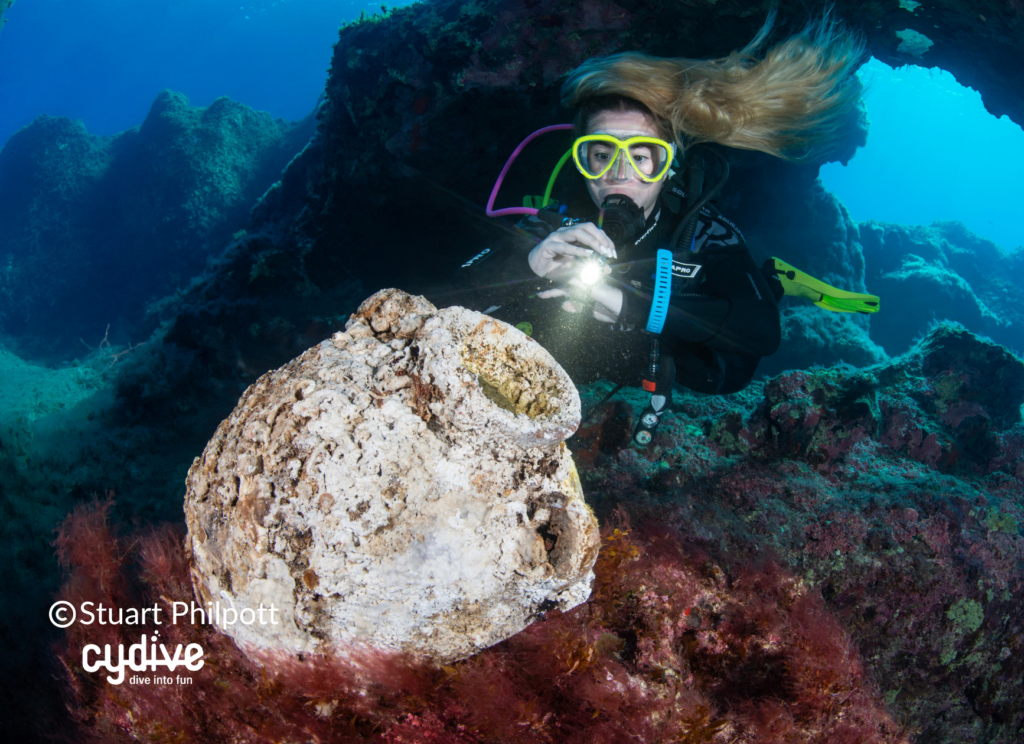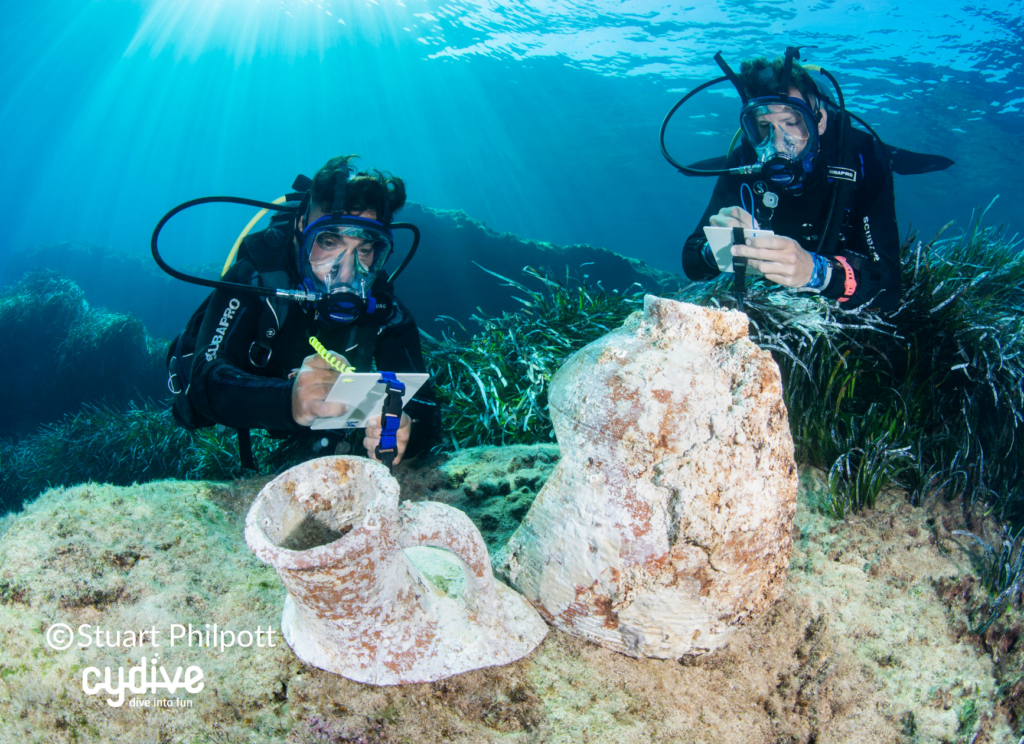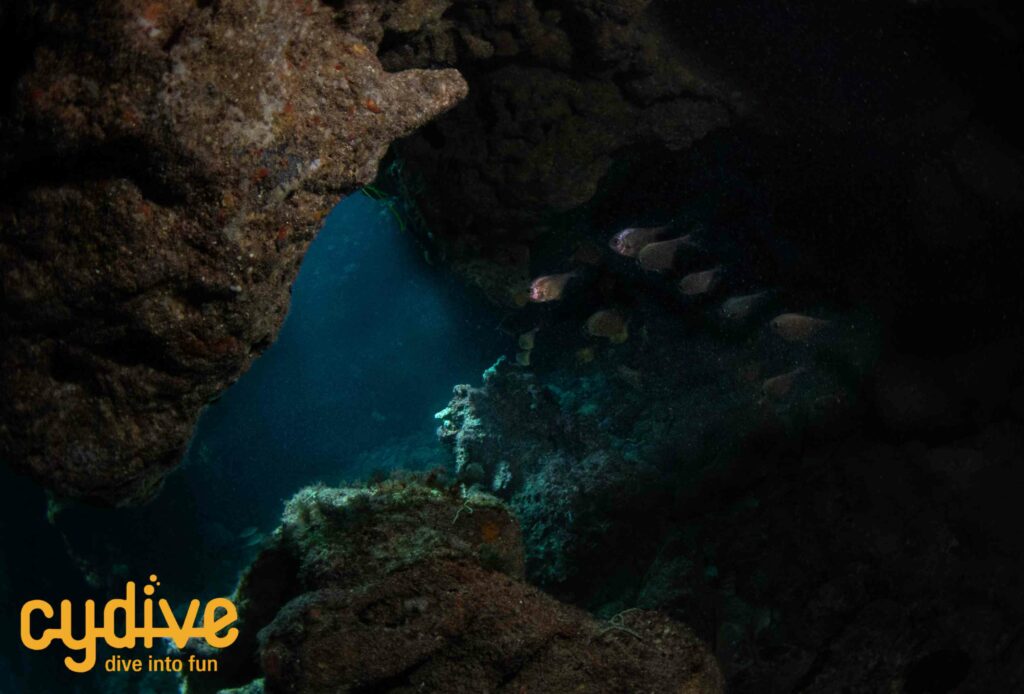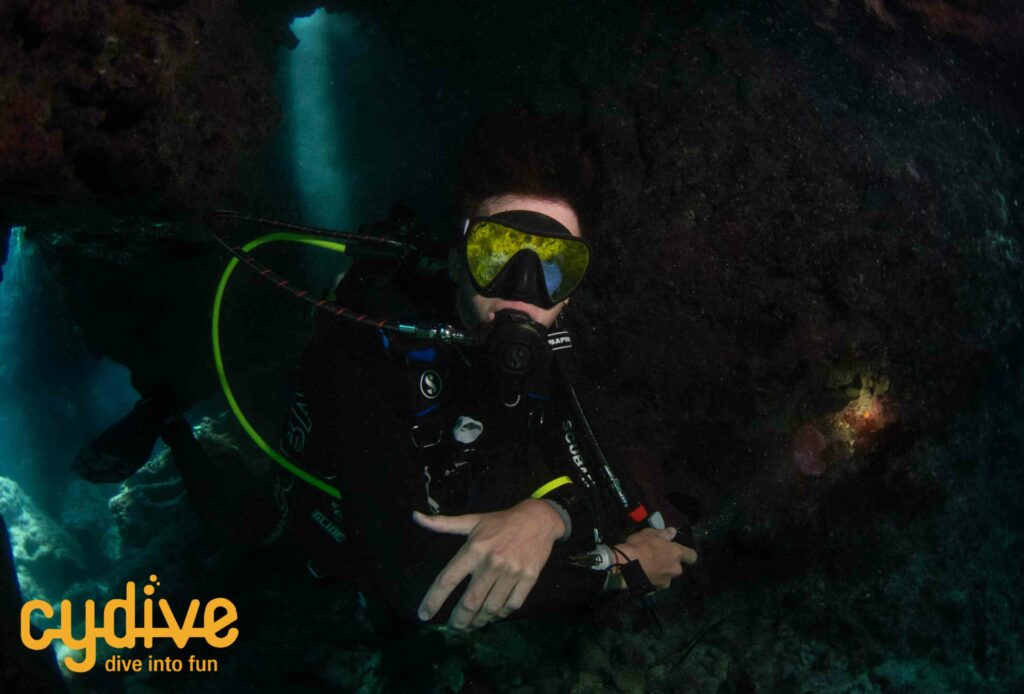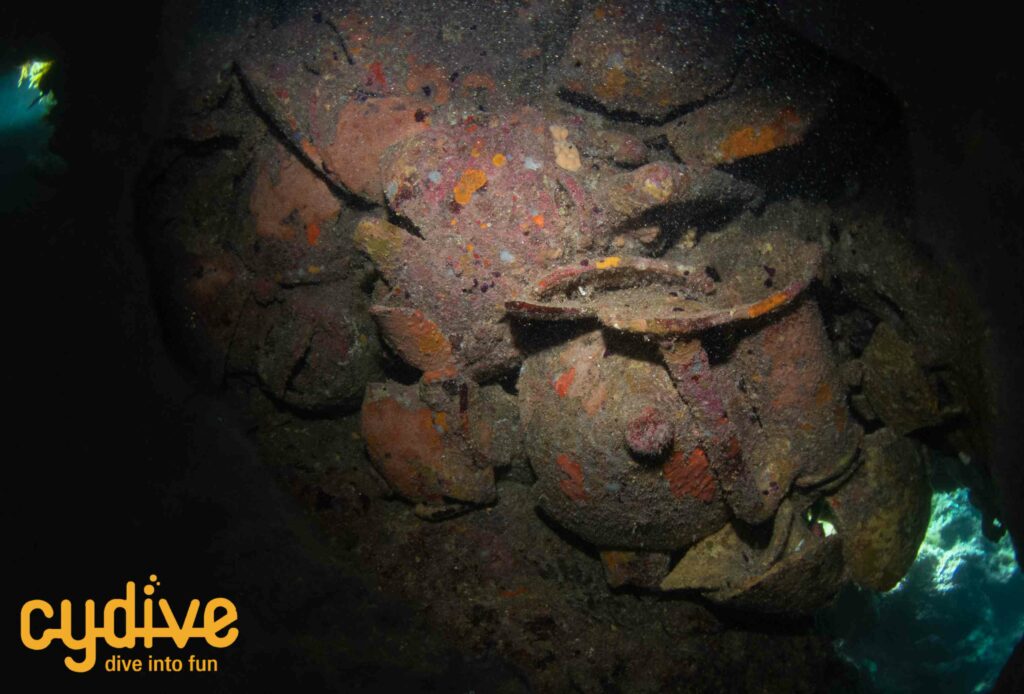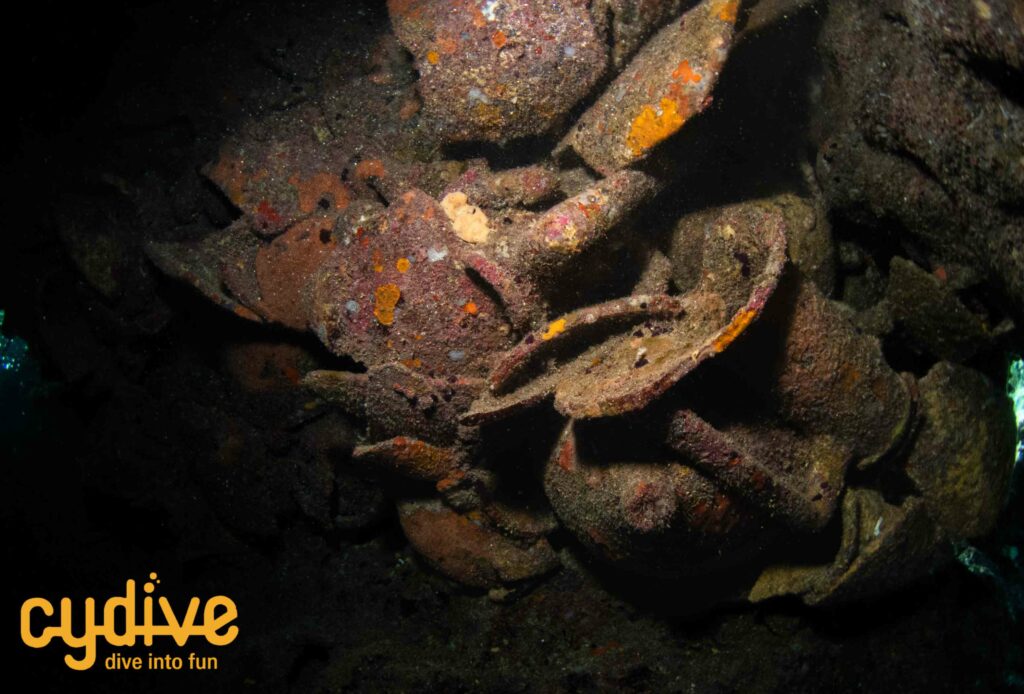
Paphos
Amphorae Caves
-
MAX DEPTH
12M -
DIVE TYPE
Reef -
CERTIFICATION
Scuba Diver + -
ACCESS
Boat
Amphorae Caves is a favourite amongst Cydive staff and divers. This dive site is great for all divers and snorkelers, due to the shallow reef and shelter from the island.
Throughout this dive site, hidden beneath Moulia Island there are a number of caves to explore; one of which has an amphorae encrusted roof! A team of American archaeologists investigated this site and believe the decorative roof is due to movement of the sea bed. This process would have happened over many, many years (2 thousand to be a little more precise).
For this dive a minimum certification level of Scuba Diver is required.
If your last dive was more than 1 year ago then you will be required to complete a refresher before joining any of our scheduled dives.
Tucked away behind a small island, this site offers calm waters and great conditions.
This dive site offers swim throughs, overhangs and a small cave. Once inside the cave, look up to the roof over your left shoulder and you will see Roman Amphorae dating back hundreds of years. Amphorae we used to store oil and wine during the roman era.
With large sea grass patches and sandy bottoms there is a chance to see green turtles and sting ray at this dive site!
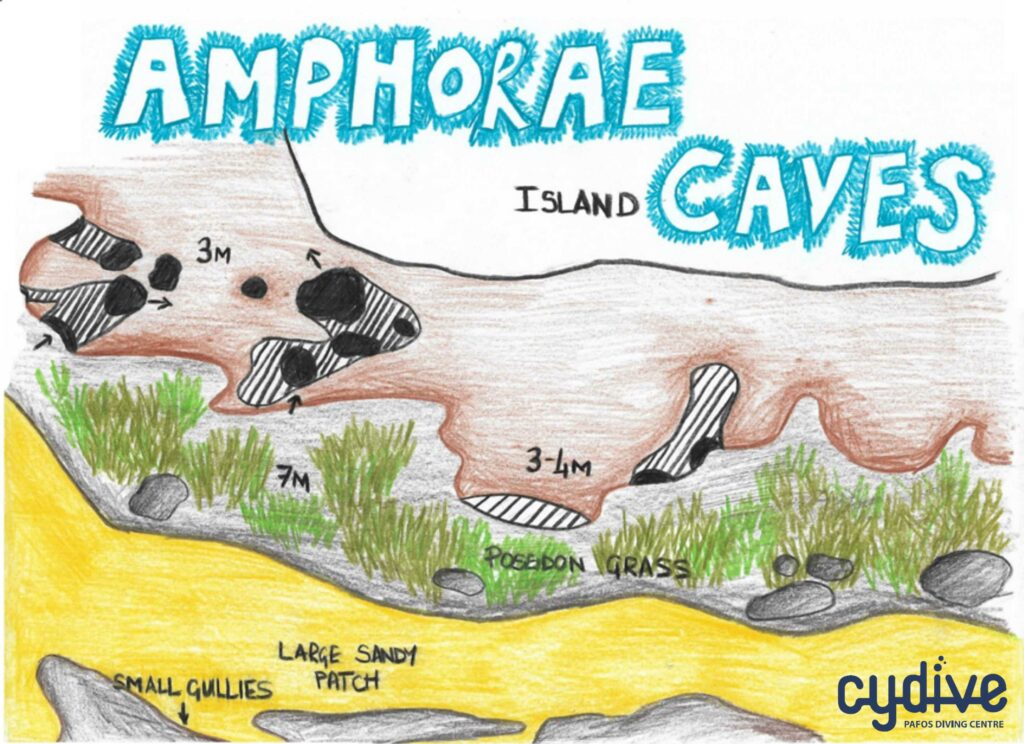
We will meet at our well-equipped diving centre in Paphos Harbour. Our friendly and helpful PADI professionals will help you with equipment and begin with an interesting and informative dive briefing. Unless you have your own diving gear, all equipment is supplied by us. We spend a few minutes checking your sizes and will fit you with the suitable gear. All of our diving equipment is well maintained and serviced regularly to ensure your safety and comfort.
Once everyone is ready we will take a short walk to the Paphos harbour where we will board Cydive II. The journey from the harbour to Amphorae Caves takes around 10 minutes by boat.
Complimentary fresh fruit and refreshments will be served on the boat before returning to the harbour. Back at the dive centre our PADI professionals will debrief you and help you to complete your logbooks.
After we anchor at the dive site we will descend down onto the reef at 5-6m, once all of the group is ready you will begin the dive.
We begin the dive by following the reef wall towards the caves. On the way there be sure to keep an eye of the reef wall for octopus, moray eels and hermit crabs. The caves and swim throughs at this site are wide and flooded with natural light with easy entry and exits. Once you reach the main cave, head inside, look up and find yourself under a amphorae encrusted roof. For the best view be sure to bring your torch and see the traditional red clay pottery.
The deepest part of this dive is a large sandy patch with areas of Poseidon grass, creating small pathways for you to follow. Keep your eyes peeled for Pearly Razorfish which dart down into the sand. On the rare occasion we sometimes see common stingray hiding in the sand!
Wrasse and Damsel fish are the most common species found at this dive site.
We have 3 kinds of wrasse found here, rainbow, ornate and peacock wrasse. Their bright colours make them easy to identify.
Damsel fish can be seen in large schools floating above the reef in warm patches of water. In the summer months you can spot the juvenile damsel fish, which are neon purple in colour, hiding in the rocks.
Hidden amongst the rubble we often find tiny nudibranch and curious octopus.
For more information about the marine life we see in Cyprus, head over to our marine life page!
Complimentary fresh fruit and refreshments will be served on the boat before returning to the harbour. Back at the dive centre our PADI professionals will debrief you and help you to complete your logbooks.
